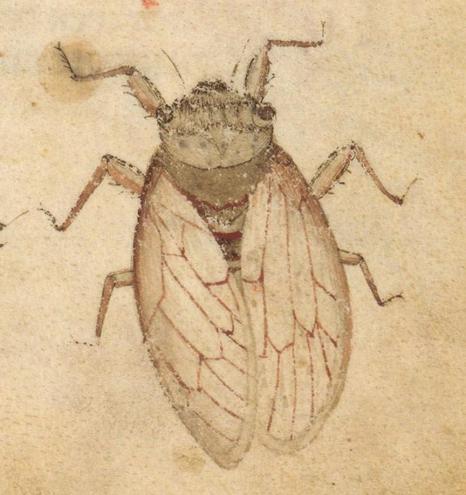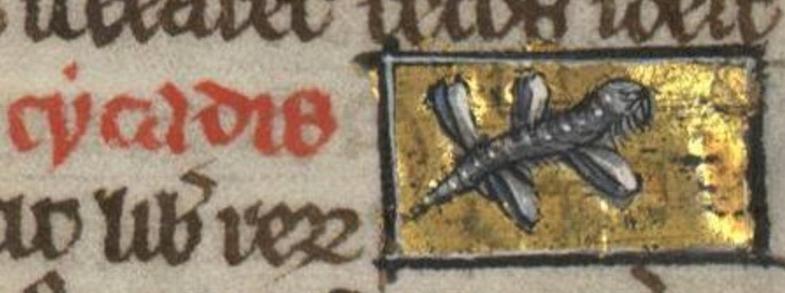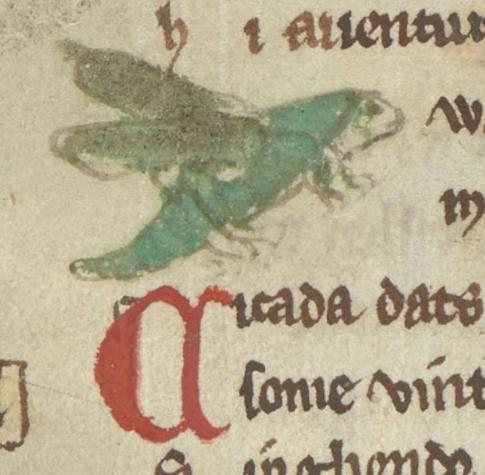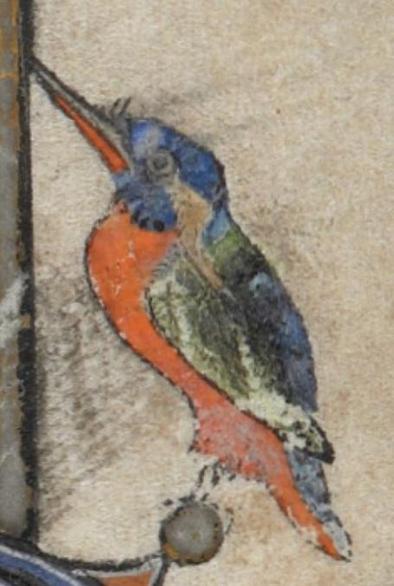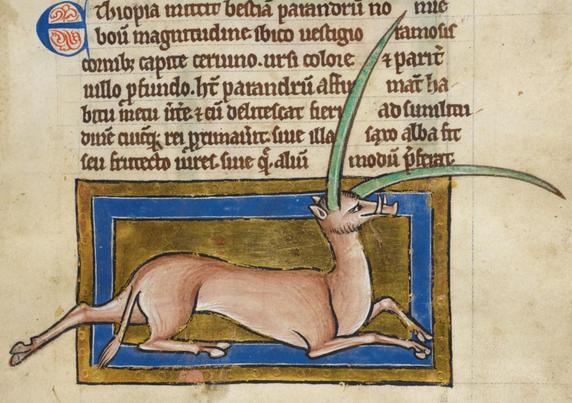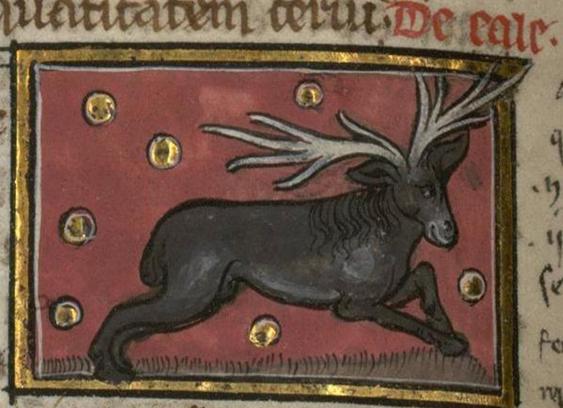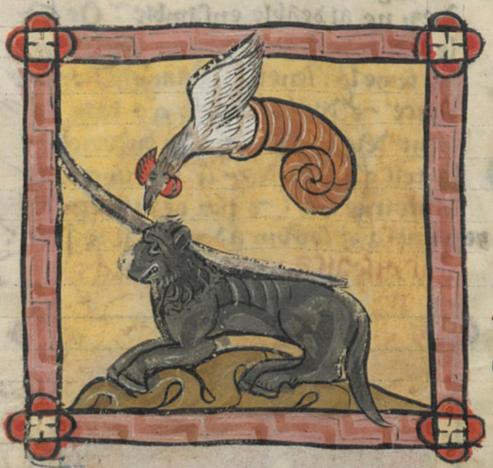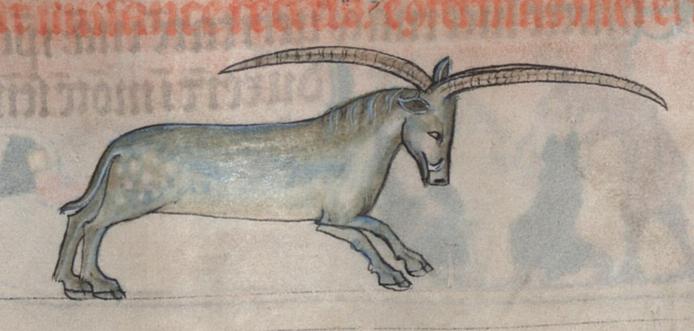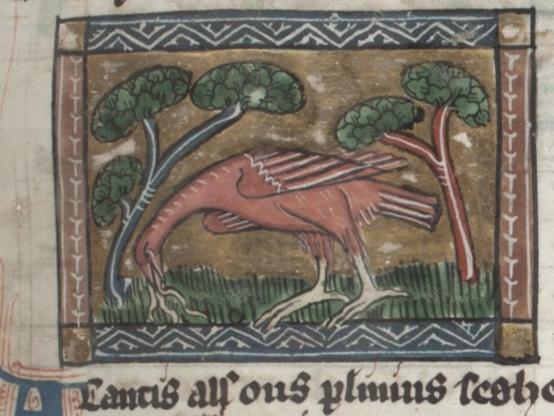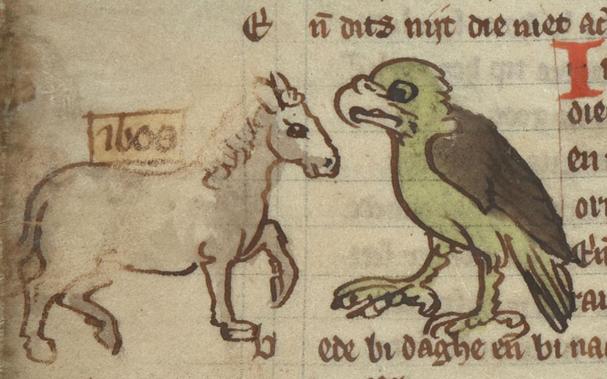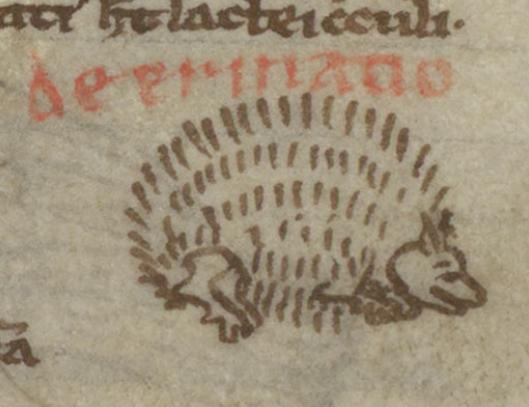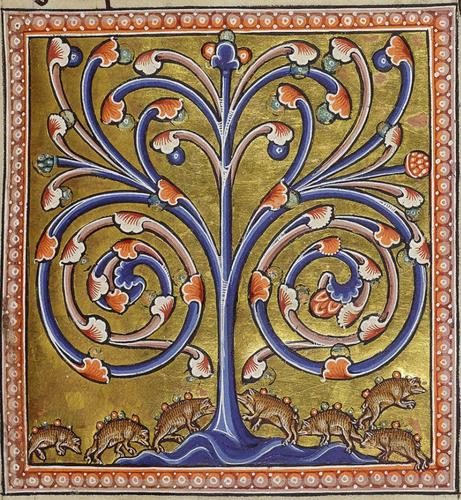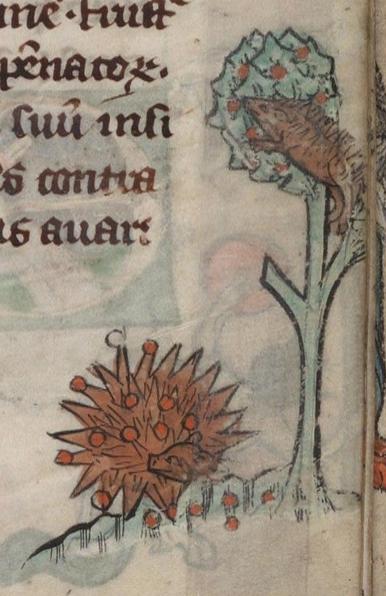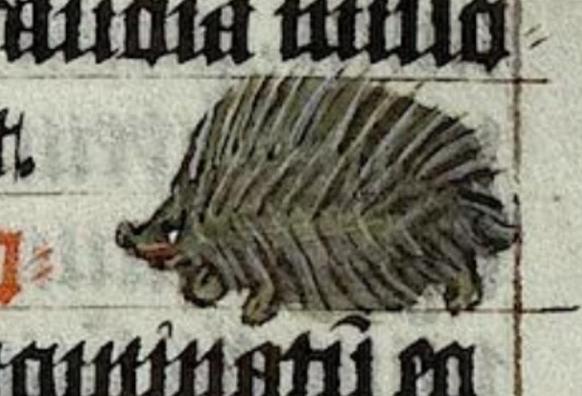Our final medieval cicada is remarkable for actually looking like a cicada even to the fine hairs on the legs. It is from an early manuscript of 'L'Acerba etas' by Cecco d'Ascoli (1257-1327). #medievalmanuscripts #medievalbeasts #beasts #cicada #cicadas
#medievalbeasts
Many medieval cicadas are only vaguely insect-like. This odd little beastie is from a 13th century French version of "Liber de natura rerum". It seems to have the prickles on its underside with which it was thought to absorb its food. #medievalmanuscripts #medievalbeasts #beasts #cicada #cicadas
This little green cicada is from a c1300-1325 version of "Der Naturen Bloeme" by Jacob van Maerlant (c1200-c1272). It seems to have a mouth which may explain its anxious expression as medieval cicadas were said to lack mouths . #medievalmanuscripts #medievalbeasts #beasts #cicada #cicadas
Our medieval beast this week is the cicada which was thought to be born from a cuckoo's saliva. This image of five cicadas is from a 1447 French translation of "De proprietatibus rerum" by Bartholomeus Anglicus (1203-1272). #medievalmanuscripts #medievalbeasts #beasts #cicada #cicadas
This particular medieval kingfisher is surprising in that it actually looks like a kingfisher as we know it, even to the colours. It is from the Alphonso Psalter, dated to 1284. #medievalbeasts #medievalmanuscripts #kingfisher #kingfishers
This delightfully cross-looking medieval kingfisher giving the viewer the side-eye as it stomps across the page is from Ann Walsh's Bestiary (dated 1400-1425) which is known for its whimsical drawings. #medievalbeasts #medievalmanuscripts #kingfisher #kingfishers
It looks more like a pelican to me. #medievalbeasts #medievalmanuscripts #kingfisher #kingfishers
This week's medieval beast is the kingfisher which may (or may not) be the same as the modern bird of the same name. It is commonly shown reaching back to its own tail feathers as in this image from the Aberdeen Bestiary (c1200). #medievalbeasts #medievalmanuscripts #kingfisher #kingfishers
This may be my favourite illustration of the yale, although its colour doesn't match the "black" of the description. I love the way its exaggerated horns actually appear to be moving and its dainty pose. It is from a British bestiary dated to c1200-1210. #medievalbeasts #medievalmanuscripts #yale
This medieval yale has an unusual set of horns in that they are branched like antlers, although they are still pointing in different directions. It is from an encyclopaedia written by Thomas de Cantimpré (1201-1272) around 1240. #medievalbeasts #medievalmanuscripts #yale
The medieval yale was also described as being black and its only known enemy was the basilisk as shown in this image from a bestiary by Pierre de Beauvais dated to the 13th century. #medievalbeasts #medievalmanuscripts #yale
Our medieval beast this week is the yale. It described as being the size of a horse with long flexible horns which it can move in any direction. It also has the tail of an elephant and the jaws of a boar. This image is from Isabelle of France's Psalter, dated 1303-1308. #medievalbeasts #yale
Our fourth different medieval anthus is again from a 1287 edition of "Der Naturen Bloeme". All the images I have been able to find of the anthus have been from "Der Naturen Bloeme" or "Liber de natura rerum". #medievalbeasts #medievalmanuscripts #anthus
The medieval anthus was said to eat grass which was the reason it was in such conflict with the horse. This anthus is yet another style of bird. It dates from 1350 and is from another edition of "Der Naturen Bloeme" by Jacob van Maerlant (c1235-c1291). #medievalbeasts #medievalmanuscripts #anthus
This particular anthus from an early 14th century manuscript of "Der Naturen Bloeme" looks like a parrot highlighting the extreme vagueness of the bird's description in medieval manuscript. #medievalbeasts #medievalmanuscripts #anthus
Our medieval creature this week is the anthus. It is described as a small bird which fought horses as in this 13th century illustration from "Liber de natura rerum" by Thomas de Cantimpré (1201-c1272). #medievalbeasts #medievalmanuscripts #thomasdecantimpré #anthus
Our oldest medieval hedgehog (from the last half of the 12th century) is also one of our more realistic. I love how this little beast looks like it has been sketched hurriedly by the scribe. #medievalmanuscripts #medievalbeasts #hedgehog #hedgehogs
Although often shown very realistically, the medieval hedgehog was also shown in a more imaginative light as this image of what looks like spiky piglets from the Aberdeen Bestiary (c1200). #medievalmanuscripts #medievalbeasts #hedgehog #hedgehogs #aberdeenbestiary
Medieval hedgehogs were said to harvest fruit (specifically grapes) by spearing fruit shaken off the tree/vine on their spines. This c1300 image shows one hedgehog in a tree doing the shaking and another hedgehog spearing the fruit. #medievalmanuscripts #medievalbeasts #hedgehog #hedgehogs
Our medieval beast this week is the hedgehog which is described as looking like a young pig covered with spines/quills. This lovely realistic image is from a 1425 version of "De rerum naturis" by Rabanus Maurus (c780-856). #medievalmanuscripts #medievalbeasts #hedgehog #hedgehogs
